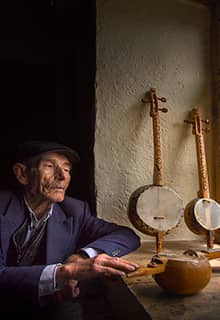

listen
Burdur
Burdur Folk Instruments
The most important local folk instruments that accompany the folk songs and traditional dance music of Burdur are the sipsi, a single-wind instrument; the cura, a two or three-stringed instrument called finger curası, which is played with the fingers; and the kabak kemane (rebab), a stringed instrument that leads the others.
Dirmil Sipsi
The sipsi is a traditional wind instruments used in Turkish folk music. It has a high-pitched sound and demonstrates different characteristics according to its height, structure, and sound. The sipsi is often accompanied by a baglama and a cura.
The sipsi is played in the Teke Region, especially Burdur, which has the richest musical culture of the region; the sipsi is most commonly played in the Altınyayla (Dirmil) district and surrounding villages.
Rebab
As its name suggests, the body of the rebab (gourd violin) is made from a gourd. The rebab is an important string instrument in the musical culture of the Teke Region. The rebab used in the region has three strings; however, due to the octave narrowness and low sound field, four-string rebabs have started to be used.
Jura
This folk instrument with two or three strings is played using a plectrum (tezene) and hand. The three-stringed cura is the busiest instrument in Bosphorus dance music, and is also used throughout the Teke Region, especially in Burdur. Nomadic Yörük communities made and performed with string instruments of these sizes, which are easy to transport.
Burdur Folk Songs
In Burdur, zeybek types – from the slowest to the fastest, from belly dances to folk dance – attract attention. In Burdur, where songs and plays are intertwined, every traditional song or tune has a folk dance. The most original example of this are the Teke Region folk songs and dances. Most of the Teke traditional music is for dancing, and the most typical dance of the region is the zeybek. In the villages of Burdur, Düğün Havaları (wedding songs), Eşkiya Havaları (bandit songs), Avşar Beyleri, Uygulamalı Havalar (variants) and Teke Havaları are still performed. The number of famous folk songs with stories still circulating today is quite high.








